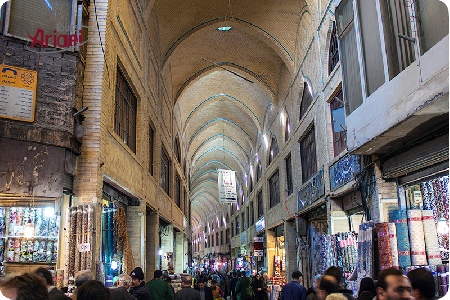When in Qajar’s era Tehran was chosen as the capital, it was nothing more than a small city with moderate and clear weather, but in the following years, Tehran was turned into one of Iran’s major cities. One important component of every city is its Bazar or place of trade and it was natural for the growing Tehran to form its Bazar. Tehran’s Bazar was made by Naser al-Din Shah, the fourth king of the Qajar era. It was part of the city’s main square that consisted of the king’s palace, and the main mosque. Most of the city’s main events were held in this part of the town and foreign ambassadors described Bazar as the most beautiful part of the city. Since Bazar was the center of economics and the tradesmen were wealthy they held a lot of power and their activity in political matters made Qajar kings very concerned and they had every reason to be afraid since later we witness that one of the main reasons that the constitutional revolution of Iran was successful is the support of tradesmen of Bazar. The area that today we refer to as the Tehran’s Bazar has only traces of what it looked like in Qajar’s era but the tradition and trade has been kept and Bazar and its surrounding, better than any other place of the city, holds the whole history of Tehran
